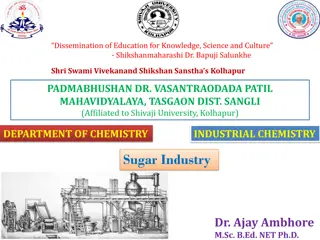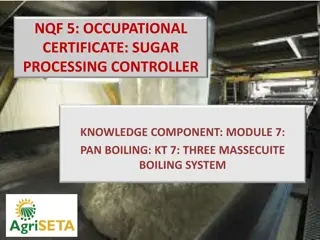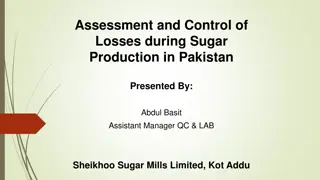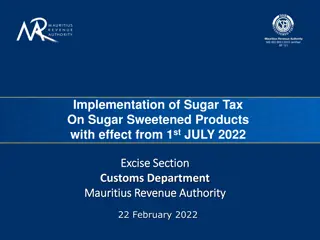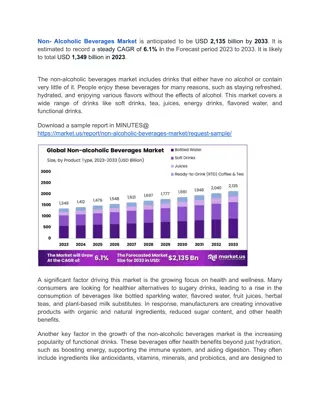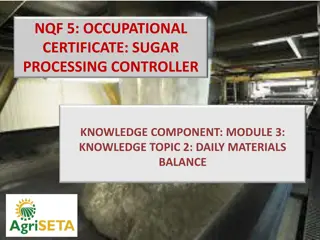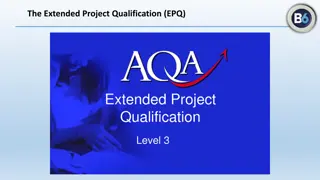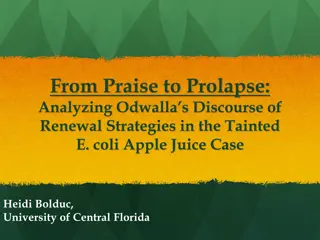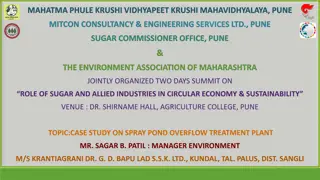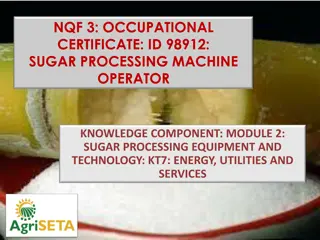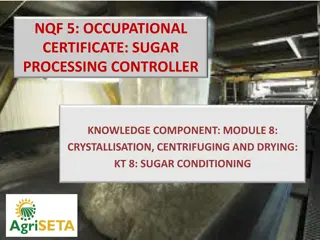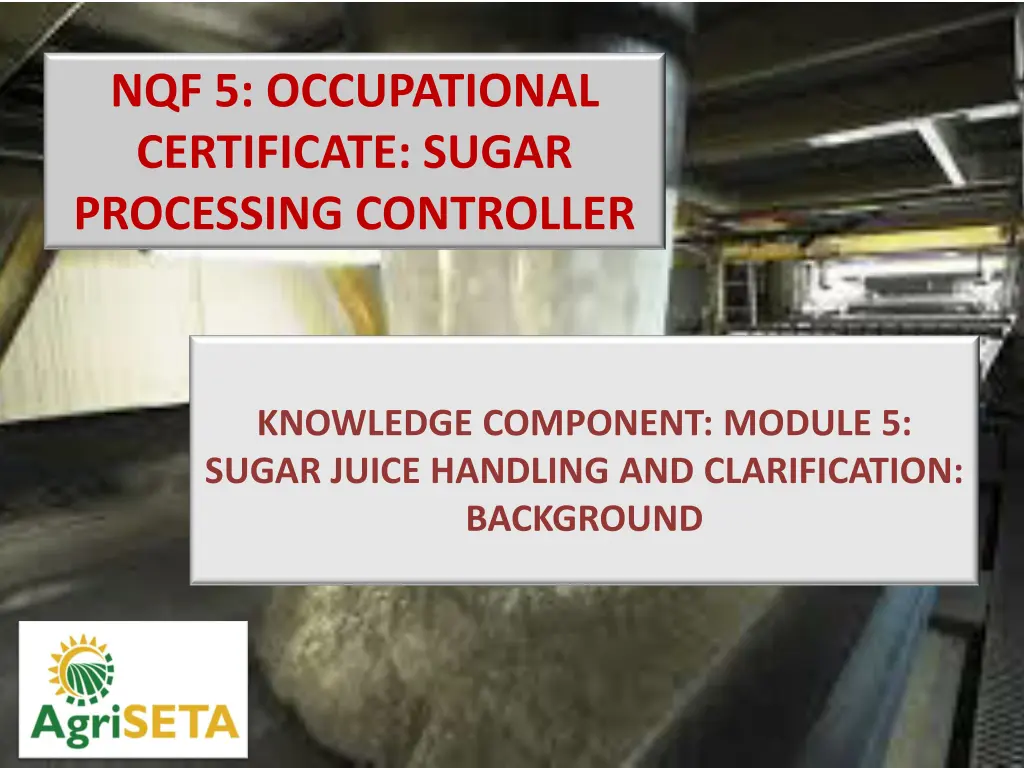
Sugar Juice Processing and Clarification Techniques
Explore the in-depth process of sugar juice handling and clarification in sugar processing. Learn about mixed juice characteristics, purification steps, heating techniques, juice heaters, liming process, and the purpose of liming in this detailed guide.
Uploaded on | 0 Views
Download Presentation

Please find below an Image/Link to download the presentation.
The content on the website is provided AS IS for your information and personal use only. It may not be sold, licensed, or shared on other websites without obtaining consent from the author. If you encounter any issues during the download, it is possible that the publisher has removed the file from their server.
You are allowed to download the files provided on this website for personal or commercial use, subject to the condition that they are used lawfully. All files are the property of their respective owners.
The content on the website is provided AS IS for your information and personal use only. It may not be sold, licensed, or shared on other websites without obtaining consent from the author.
E N D
Presentation Transcript
NQF 5: OCCUPATIONAL CERTIFICATE: SUGAR PROCESSING CONTROLLER KNOWLEDGE COMPONENT: MODULE 5: SUGAR JUICE HANDLING AND CLARIFICATION: BACKGROUND
Sugar Cane Processing Steps: Juice Clarification
Mixed Juice Crushed juice and first mill juice are mixed and screened of bagasse particles This mixed juice is pumped to the mixed juice scales Mixed juice: Is a cloudy, greyish or greenish, foaming liquid Has 80 to 84% water content Contains sand particles, fine bagasse particles, cane wax and air bubbles Definition: Flocculant A flocculant is a substance which promotes the clumping of particles.
Purification of Mixed Juice Removal of impurities Done by: Heating to +/- 104 C Liming (defecation process) Settling of mud Decanting of clear juice Filtration of mud
Heating Mixed juice is weighed Pumped to a surge tank Pumped to the juice heaters Heated in two stages Primary heating to 70 C (Using vapour from the first or second effect evaporator) Secondary heating to 104 C (Using exhaust steam)
Juice heaters A steam chest with tubes through which the juice flows and around which steam is present Tube plates form compartments Baffles force the juice to change direction to and fro The juice is heated to about 104 C and limed to 7.5pH Then passes through the in-line mixer to the Flash tank where the juice is exposed to atmospheric pressure to remove air
Liming Milk of lime is prepared by slaring burnt lime or quick lime in a slaker Slaker consists of stirrers with cold water Lime is present in suspension (and a small part in solution) To prevent lime particles settling in the pipeline it is pumped around continuously Milk of lime is kept in three buffer tanks Milk of lime is continuously added to the hot juice in the perry tank with the pH controlled automatically
Purpose of Liming Mixed juice is acidic (5.5pH) Milk of lime addition causes a precipitate of calcium phosphate This removes suspended solids from the juice After settlin gof this precipitate (mud) a layer of clear yellow juice will be seen. This precipitate is filtered and the filtrate returned to the mixed juice after the mixed juice scale.
The Purpose of the correct liming If clear juice is heated at a pH below 7: Sucrose will be hydrolysed and form invert sugar Quantity of sugar inverted depends on: The pH (more sugar is inverted at a lower pH) The temperature (the reaction is speeded up, when the temperature is higher) The time
The Purpose of the correct liming If clear juice is heated at above 7.6: The reducing sugars form coloured bodies and acids This affects the production of white sugar Optimal pH is 7.2
Clarifiers Two types of clarifiers in South Africa SRI clarifier Juice enters tangentially from the sides Short retention time Rapi-Dorr clarifier Operated on the counter-flow principle Juice enters from the top Long juice retention time Flocculant is dosed continuously to the lime and heated juice before the clarifier Polyelectrolytes Separan R300 Magnafloc LT27 Talosep A3 Forms polymers with attached (mud) particles
The Clarifier From the perry tank the juice flows to a clarifier Here continuous settling takes place Consists of a cylindrical shell with four conical (sloping) trays The clarifier fills from the bottom up The hollow central shaft: Through which the juice enters the clarifier, Feeds the four compartments Slowly rotates Has 4 scraper arms Scrapes the mud from the sloping trays Mud is pushed into the mudwell by the scrapers Clear juice is drained off from the top of the clarifier
Filtering of the Mud Mud from the mudwell is pumped (or gravity fed) to the mud box This flows to the mud mixer It is mixed with bagacillo (which serves as a filter aid) Processed using a vacuum filter drum Undissolved dry matter in the mud is retained on a screen on the vacuum drum filter and is removed as cake Mud particles passing the screens of the vacuum drum filter are returned with the filtrate to the mixed juice Good filter operation depends on: Good retention Low pol% of filter cake



